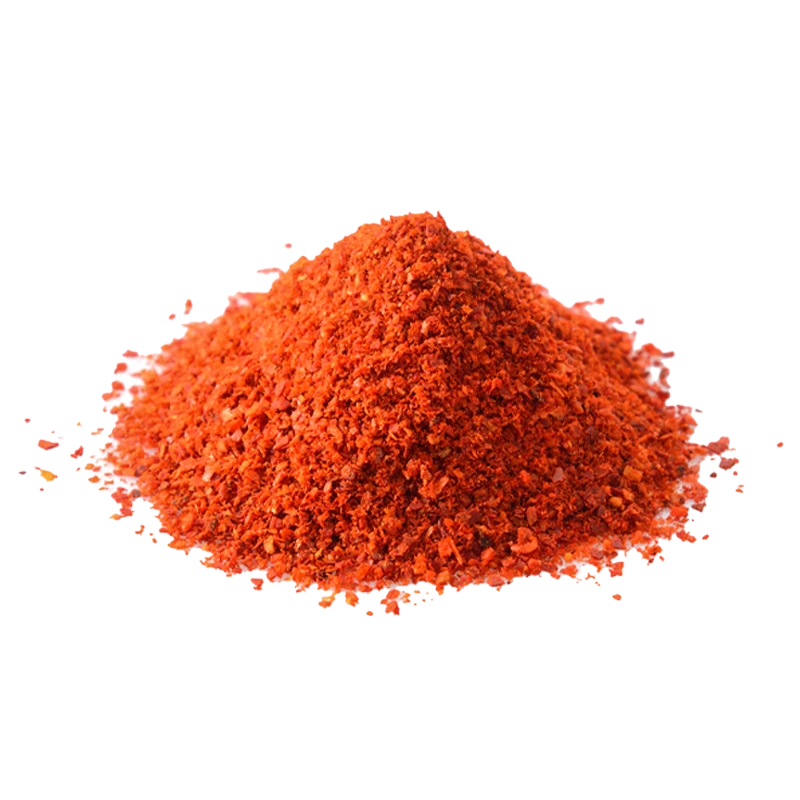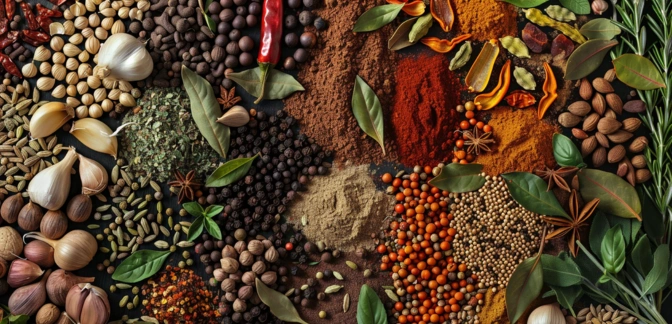Paprika — Nutrients, Health Benefits, and Shopping Tips

Written by Listonic Team
Last update on September 6, 2024
Paprika nutrients
Nutrition facts
Amount per 100 g
Calories
🔥 40 kcal
| Nutrition per: 100 g | Value | % Daily Value* |
|---|---|---|
| Carbs | 9 g | 3.27% |
| Fiber | 3 g | 10.71% |
| Sugars | 5 g | 10% |
| Glycemic Index | 0 | - |
| Protein | 2 g | 4% |
| Sodium | 9 mg | 0.39% |
| Total Fat | 0 g | - |
*The % of Daily Value (DV) tells you how much a nutrient in a serving of food contributes to a daily diet. 2,000 calories a day is used for general nutrition advice.
Paprika facts & tips
Health benefits
- Rich in antioxidants, including vitamins A and E, which help protect the body from free radicals and reduce inflammation.
- Supports eye health due to its high content of carotenoids, such as lutein and zeaxanthin, which can help protect against age-related macular degeneration.
- Enhances flavor in a variety of dishes, making healthy foods more enjoyable and palatable.
- Contains essential vitamins and minerals such as Vitamin C, Vitamin B6, and iron, which support overall health and well-being.
Health risks
- Potential for digestive discomfort such as heartburn or stomach irritation when consumed in large quantities, particularly in individuals sensitive to spicy foods or nightshade vegetables.
- Risk of allergic reactions in some individuals, particularly those allergic to peppers or related plants, causing symptoms like itching, swelling, or difficulty breathing.
- Potential for contamination with pesticides or heavy metals if the paprika is not sourced from reputable suppliers.
- Potential for interactions with medications particularly blood thinners, as paprika may have mild anticoagulant effects when consumed in large quantities.
- Low nutrient density as paprika is typically used in small amounts as a seasoning, offering limited vitamins or minerals.
How to choose paprika
Paprika should boast a vibrant red color and a fine texture, showing it has been ground properly and stored well. The spice should be aromatic, giving off a sweet and slightly pungent smell typical of fresh paprika.
Avoid paprika that looks faded or smells stale, as this indicates it may have lost its flavor and coloring properties. Packages that have been previously opened or show signs of moisture should also be avoided, as this can affect its flavor and longevity.

How to store paprika
Paprika should be stored in an airtight container in a cool, dark place. This helps maintain its vibrant color and flavor for up to a year. Proper storage keeps it fresh and aromatic.
Light and air exposure can cause paprika to lose its potency. Avoid storing near heat sources, which can cause it to clump. Ensuring the container is tightly sealed keeps it fresh and flavorful for cooking.
✅ Extra Tip
How long does it last?
Paprika can last for 2-3 years when stored in an airtight container in a cool, dark place. Proper storage helps maintain its flavor and potency, ensuring it enhances your dishes. For the best quality, use it within this time frame.
What to do with leftovers?
Leftover paprika can be used in a variety of culinary and non-culinary ways. In the kitchen, paprika adds a sweet, smoky, or spicy flavor to dishes like soups, stews, marinades, and rubs. It’s a versatile spice that can enhance the flavor of meats, vegetables, and grains.
Beyond cooking, paprika has several creative uses. It can be used in DIY beauty treatments, such as mixing it with honey or yogurt to create a warming face mask that helps to detoxify and rejuvenate the skin. Paprika can also be used in craft projects, such as creating natural dyes for fabrics or adding color to homemade candles and soaps. Additionally, paprika’s vibrant color makes it useful in decorative applications, such as sprinkling it on plates for garnish or using it in art projects for a bold, natural pigment.
👨⚕️️ Medical disclaimer
Discover products from other categories
Listonic Team
Fact-checked
Our editorial team checked this article to make sure it was accurate at the time of publishing it.
Get the top-rated shopping list app on your phone!







